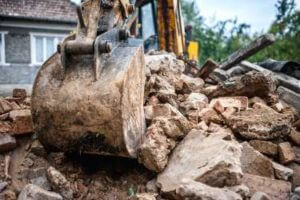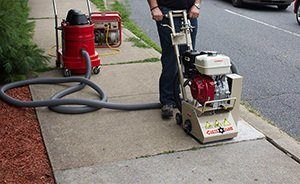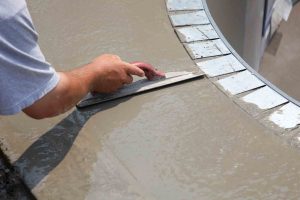Cement concrete is the most widely used material in construction because of its extraordinary strength and durability. Despite that, it is not uncommon for concrete to deteriorate due to changes in the atmosphere, material limitation, and design errors. Cosmetic concerns such as hairline cracks may not be a cause for alarm, but other signs of wear must be addressed timely to prevent greater and costlier damages.
There are many factors that contribute to the deterioration of concrete. Excessive moisture is one of the major factors that challenges the structural performance of concrete. When exposed to rainfall, freshly-poured concrete may show delayed signs of damage overtime. The excess water in the slab creates a high water-cement ratio that reduces the concrete’s durability.
One case report revealed that degradation of reinforced concrete structures starts in rainy and winter seasons. Structures that remain in wet condition are susceptible to corrosion that leads to cracking, spalling, and delamination. The report also discussed the importance of simple inspection to verify the extent of degradation in concrete structures.
Rainwater might be the major culprit in concrete degradation, but it also helps in assessing the structural integrity of these surfaces. The next time it rains, inspect your driveway, parking lot, or patios to evaluate the possible hazards you may encounter in the future.
1. Check where the flow of water is heading
Designating storm sewers and drains is a good precautionary measure to prevent flooding and water damage. Rain water must flow into these structures and not towards your property. Surfaces that are sheltered from the direct downpour of rain are much better preserved while those constantly exposed to rain will show early signs of wear (e.g., cracking, pitting, and lifting).
2. Check for cracks and other signs of concrete deterioration
Cracking is inevitable and even high-quality concrete, with long years of service under its belt, is not immune to the harmful effects of rainwater. But, not all signs of damage require replacement; some cracks and chips can be mended by resurfacing. With that being said, you still need to assess if the signs of damage are negligible enough to not pose a safety hazard. According to the Americans with Disabilities Act, any joint or crack with a vertical change of over 1/4 inch is considered a trip hazard. Preventive maintenance and repair will keep concrete structures in top condition and help you prevent legal liabilities.
3. Check for puddles or standing water
The effects of excessive moisture on concrete must not be downplayed. Even the monumental column of Emperor Trajan in ancient Rome was not spared from acid rain and pollution in the modern day. These environmental elements have caused the erosion of intricate carvings in the famous city landmark, and it can do as much damage to concrete surfaces submerged in a pool of rainwater. If water pools around your property’s foundation, it will seep into the concrete, causing cracks. If worse comes to worst, the cracks will cause the foundation to shift, creating more damage. If you notice cracks in the walls and ceiling of your home or building, it’s a sign that your concrete foundation is affected by standing water.
4. Check for dusting in the hardened concrete
If rain or hail damages an unprotected newly laid slab, the surface may show signs of pitting. Rain exposes the aggregate by washing finer cement particles away. After a couple of weeks, dusts may also develop on its surface. Dusting is the formation of a fine, powdery substance at the surface of hardened concrete. Dust develops as a result of having a weak surface layer, using a mix with more water, and letting the surface dry rapidly. Resurfacing is recommended to fix the uneven surface and dusting caused by rain. Concrete surfaces with loose aggregate that are not treated will wear faster.
How Rainwater Causes Damage in Concrete Surfaces
Rainwater is composed of different chemicals from dissolved particulate materials in the atmosphere. Because of this, the composition of rain varies from place to place. Human activities, local climate, and biome function affect the type of particulates in the atmosphere, which in return, affect the chemical composition of rainwater.
When rain gets in contact with concrete, it triggers certain processes (e.g., carbonation, acid and sulfate reaction) that make concrete vulnerable to deterioration. Knowing these processes and understanding the vulnerabilities of concrete will help you in detecting rain damage and minimizing maintenance cost and repairs.
Professional Concrete Evaluation
Before planning for an effective repair and maintenance program, it’s essential to perform a comprehensive investigation of concrete deterioration. Construction engineers and contractors employ various techniques in assessing damages in concrete surfaces.
Visual Condition Survey – the first step in concrete assessment. It involves observing and documenting the condition of the structure involved. Different methods are used to identify areas with potential hidden deterioration, which are as follows:
- Dragging a steel chain across the concrete surface – a structurally intact concrete produces a high-pitched sound while a surface with sub-surface deterioration emits a low-pitched sound.
- Inserting a fiber-optic scope on a concrete opening – the use of a fiber-optic scope allows the direct observation of hidden problems from small probe holes. Concrete-penetrating radar and x-ray may also be used in some cases.
- Half-cell testing – performed by setting an electrical circuit connected to reinforcing steel and measuring the electrical potential on grid points. It is a helpful technique in identifying the areas vulnerable to steel corrosion.
Material Testing – the most critical part of concrete evaluation. A well-designed testing program is important in developing appropriate repair, protection, and strengthening recommendations, similar to the following:
- Gathering of core samples
- Testing for compressive strength, chloride content, and degree of carbonation.
- Performing microscopic and chemical tests to come up with a detailed evaluation of specimen condition.



